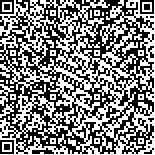| 摘要: |
| [摘要] 目的 分析程序性细胞死亡因子4(Programmed cell death 4,PDCD4)与端粒酶在冠心病心肌组织中的表达关系,探讨其对冠心病心肌损伤患者的临床诊疗意义。方法 收集冠心病心源性猝死组、冠心病非心源性猝死组及正常死亡组心肌切片标本各25例,应用免疫组织化学方法,对PDCD4与端粒酶进行检测,观察并分析两者在各组中的阳性检出率及表达量的关系。结果 (1)PDCD4与端粒酶在冠心病心源性猝死组的阳性平均检出率分别为27.36%、30.08%;在冠心病非心源性猝死组的阳性平均检出率分别为73.58%、76.22%;在正常死亡组的阳性平均检出率分别为89.52%、92.31%,冠心病心源性猝死的PDCD4与端粒酶的阳性检出率明显少于其他两组,差异有统计学意义(P<0.05)。(2)PDCD4与端粒酶的积分光密度中位数冠心病心源性猝死组分别为2 776.32、11 889.65,冠心病非心源性猝死组分别为1 073.52、7 254.91,正常死亡组分别为987.48、6 908.27,冠心病心源性猝死组的PDCD4与端粒酶的积分光密度的中位数明显高于其他两组,差异有统计学意义(P<0.05)。结论 PDCD4与端粒酶在冠心病心源性猝死患者的心肌组织中阳性检出率较低,中位数呈过表达,而在冠心病非心源性猝死及正常死亡患者的心肌组织中检出率均较高,表示PDCD4与端粒酶可能是冠心病心肌损伤中的关键标志物,对临床诊疗冠心病心肌损伤具有一定的指导作用。 |
| 关键词: 程序性细胞死亡因子4 端粒酶 冠心病猝死 研究 |
| DOI:10.3969/j.issn.1674-3806.2018.04.02 |
| 分类号:R 541.4 |
| 基金项目:广东省医学科学技术研究项目(编号:A2016100) |
|
| Expression and significance of PDCD4 and telomerase in myocardial tissues of sudden death patients with coronary heart disease |
|
CHEN Gang, WANG Yang, WU Xu-ting, et al.
|
|
Department of Cardiovascular Medicine, the Fifth Affiliated Hospital of Southern Medical University, Guangzhou 510900, China
|
| Abstract: |
| [Abstract] Objective To analyse the expression of programmed cell death 4 (PDCD4) and telomerase in myocardial tissues of sudden death patients with coronary heart disease and to discuss its clinical significance in coronary heart disease patients with myocardial injury.Methods 25 sudden death patients with coronary heart disease(cardiac sudden cardiac death in coronary heart disease group), 25 non-sudden death patients with coronary heart disease(non- cardiogenic sudden death of coronary heart disease group) and 25 dead patients without coronary heart disease(normal control group) were collected. PDCD4 and telomerase were detected by immunohistochemical method and were analyzed among the three groups.Results (1)The positive rates of PDCD4 and telomerase in the cardiac sudden cardiac death in coronary heart disease group were 27.36% and 30.08% respectively.The positive rates of PDCD4 and telomerase in the non-cardiogenic sudden death of coronary heart disease group were 73.58% and 76.22% respectively. The positive rates of PDCD4 and telomerase in the normal control group were 89.52% and 92.31% respectively. The positive rates of PDCD4 and telomerase in the sudden cardiac death of coronary heart disease group were significantly lower than those in the other two groups(P<0.05). (2)The median values of optical density of PDCD4 and telomerase in the cardiac sudden cardiac death in coronary heart disease group were 2 776.32 and 11 889.65 respectively. The median values of optical density in the non-cardiogenic sudden death of coronary heart disease group were 1 073.52 and 7 254.91 respectively. The median values of optical density in the normal control group were 987.48 and 6 908.27 respectively. The median values of optical density of PDCD4 and telomerase in the sudden cardiac death of coronary heart disease group were significantly higher than those in the other two groups(P<0.05).Conclusion The positive rates of PDCD4 and telomerase are lower in the cardiac muscle tissues of the patients with CHD cardiac sudden death whose median values are overexpressed, but higher in non-cardiogenic sudden death patients with coronary heart disease and in the dead patients without coronary heart disease. These indicate that PDCD4 and telomerase may be the key markers of myocardial injury in coronary heart disease, and have a certain guiding role in the clinical diagnosis and treatment of coronary heart disease. |
| Key words: Programmed cell death 4(PDCD4) Telomerase Cardiac sudden death Study |

